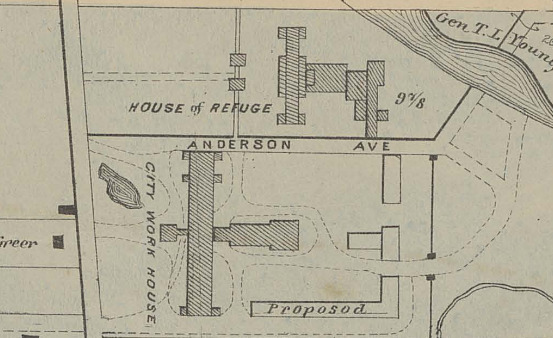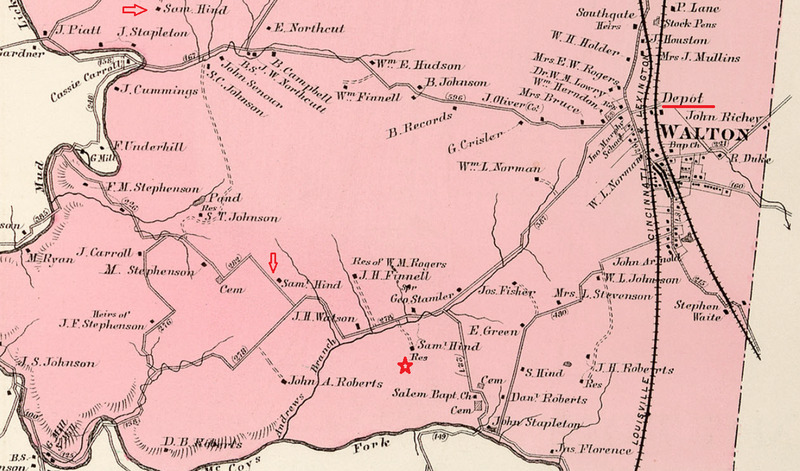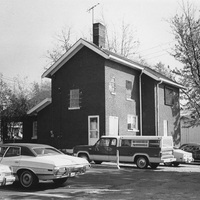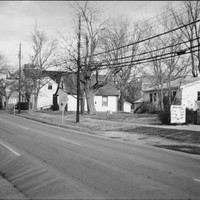-
Title
-
1885--William Scales Accused of Rape and Lynched
-
Date
-
11 Sep 1885
-
Formatted date
-
1885-09-11
-
Event type
-
Lynching
-
Description
-
Upon his release from the Cincinnati Work House in 1885, where he had served a nine-month sentence for "petit larceny", William Scales returned to Boone County and found work on the farm of Samuel Hind (see 1883 Atlas segment, below). Hind had employed his mother Patsy in 1880, so this may explain William’s arrival there in 1885.
-
On September 5th of that year, William Scales was accused of committing rape upon the five-year-old daughter of Richard Lunsford, a tenant on the Hind farm. He was immediately detained by Sam Hind, who stopped Lunsford from shooting William, the law would handle it. William was taken first to the depot in Walton, where the local constable took his confession and charged him. He was then transported without incident to the Burlington jail to await trial.
-
The small jail was occupied by two prisoners when William Scales arrived: both were charged with felonies and both were white men. One of the prisoners, J.W. Grubbs, had been recently been caught and jailed for shooting a neighbor 19 years prior; he had been on the lam since 1866.
-
Another prisoner, John Drinkard, was arrested in June after he shot and killed his childhood friend, George Holder, in a bar fight in Walton. Holder was well-liked throughout Walton and his death angered many in town; mob violence against Drinkard was threatened. A few days after his arrest, he was moved to the Covington jail, where he stayed for over two months before being sent back to the Burlington jail on August 14th. His presence there remained risky.
-
When William Scales arrived on September 6th, he was housed in the upper chamber of the jailhouse in hopes that this would keep him safe from vigilantes. The upper room was not as secure as the cells on the ground floor, but Scales was under guard and harder to reach. The plan to fool an angry mob did not go as the jailer had hoped.
-
While William was detained, his father, Frank, who lived in Burlington, paid him a visit. Though he was only twenty years old at the time, he had not seen his father in many years. This would be the last friendly visit of his life. Newspaper reports indicated that Frank was not inclined to claim William as his son at first, but the visit to the jail seemed to confirm the relationship.
-
Unlike previous lynchings, the mob did not arrive for several days, but recent events made it seem a foregone conclusion. Reporters from Covington and Cincinnati were attracted by the idea of a sensational headline and several came to Burlington after hearing of William’s arrest, anticipating the coming violence. One reporter spoke with William, who seemed resigned that he would pay for his crime. While the reporter was in town, a man who claimed to have known William Scales as the stable boy in Cincinnati also visited, confirming his suspicions that this was the same man.
-
When the mob arrived in the dark of night on September 11th, 1885, they consisted of two factions: men from Florence and a gang from Walton. The men from Walton intended to lynch both William Scales and John Drinkard, who had killed their friend, George Holder. The Florence group were loyal to Drinkard, who was living in Florence prior to his troubles and was well-liked there; they would not allow Drinkard to be taken from the jail, though they were more than enthusiastic about killing William Scales. The delay of the expected lynching party was attributed to this disagreement among the mob members.
-
Once the group hammered out their disagreements, they headed to Burlington. They were a drunken mob, both armed and dangerous, but also seemed comically disorganized. Sadly, this lack of planning would cause added cruelty to an already violent act.
-
When the mob’s demands for the keys to the jail were rebuffed, several went to work breaking down the reinforced exterior door to the upper chamber where William was being held. Their focus on this door indicates they had some knowledge where Scales was being held in the special chamber. Once the door was compromised, Scales was roughly extracted from the building and fell down the stairs, cutting a long gash across his head in the process. They then marched him off to a waiting wagon and headed to the direction of the “lynching tree” where Smith Williams had died in 1876 and young Charles Dickerson met his fate just over a year before Scales.
-
According to a reporter who had followed the assemblage from town, as the mob began to hang him, William was able to untangle himself and break the straps that served as a noose, leaving them attached to the tree branch. In their drunken state, the men had forgotten to bind Scales’ hands, but were able to keep the injured man from getting away. A new plan was hatched, but they were now a lynch party without a rope. Soon, one was obtained from a toll-keeper as they progressed up the pike to the new location, a few miles away. The second attempt at hanging was completed; William Scales’ body was discovered the following morning.
-
Perhaps because of the disorganized approach of the large mob, witnesses were plenty, and there was some suggestion that several members would be charged this time. Even with this public display, no charges were brought against mob members. The Grand Jury that October found that witness testimony was “not sufficient to justify indictments.”
-
On September 12th, 1885, the day William Scales’ body was discovered hanging near Florence, John Drinkard was again removed from the Burlington jail and transferred to Covington for his own safety to await trial.
-
Participant
-
African American(s): Scales, William
-
Scales, William N.
-
Other participant(s): Lunsford, unknown





